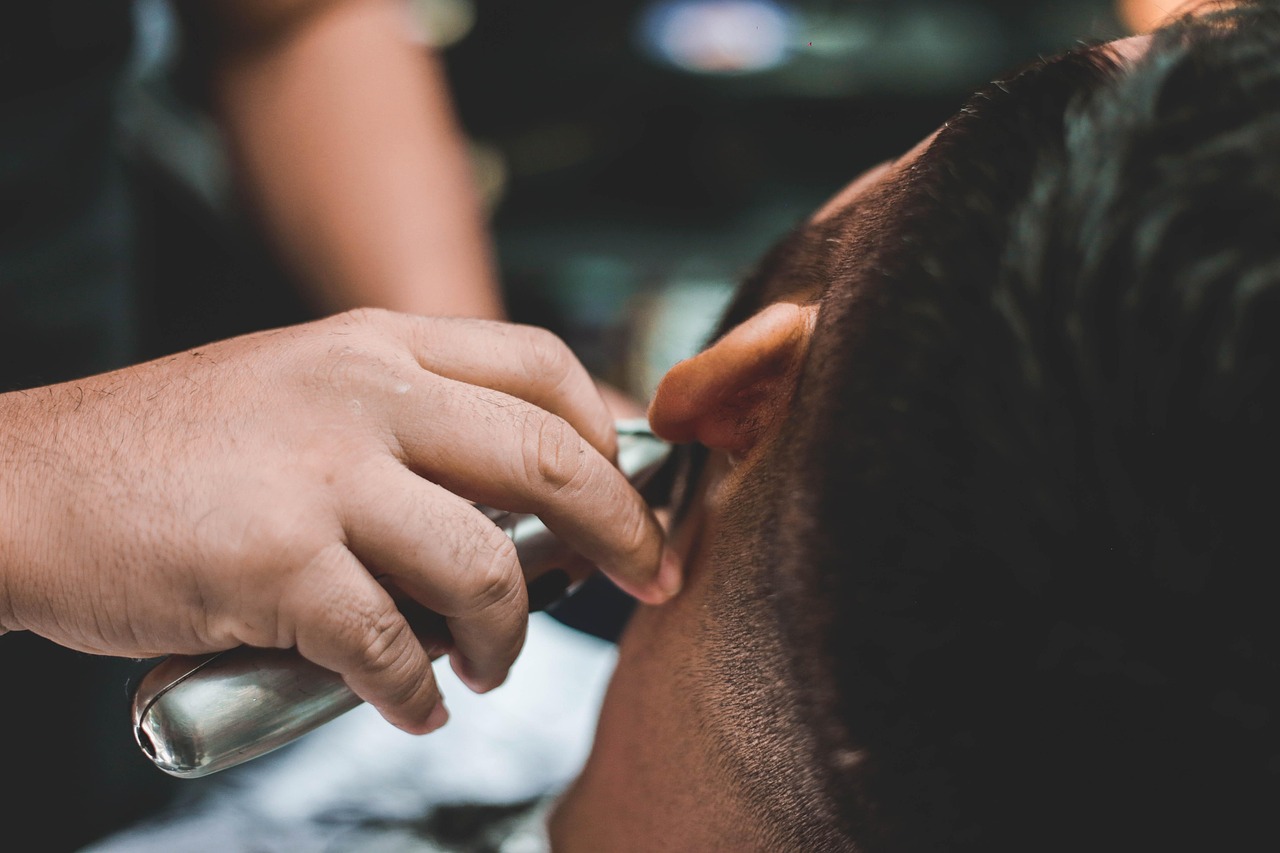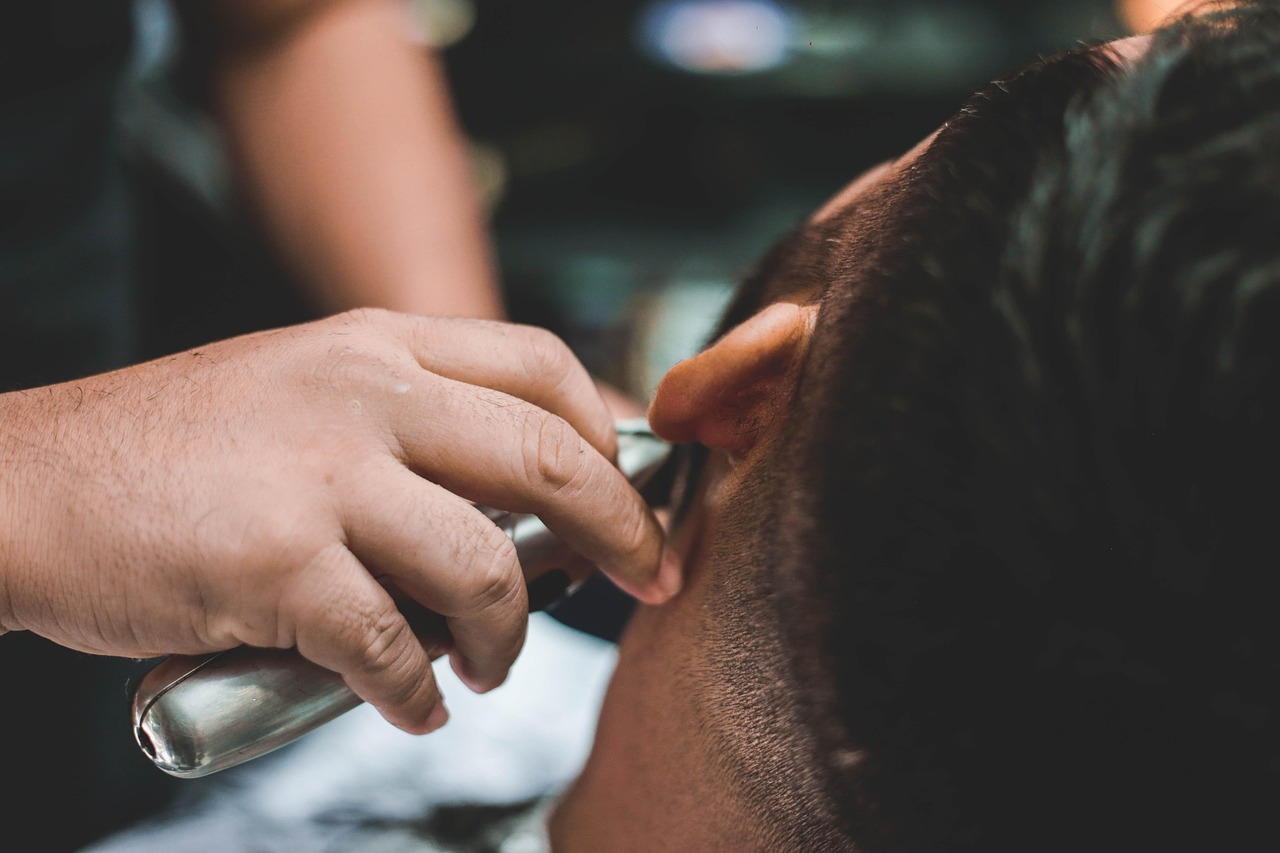This article delves into the latest innovations in hair transplant techniques, showcasing the advancements made by leading clinics in 2024. These innovations aim to enhance patient outcomes and overall satisfaction, ensuring a more effective and comfortable experience for those seeking to restore their hair.
Understanding Hair Transplantation
Hair transplantation is a surgical procedure that moves hair follicles from a donor site to areas experiencing hair loss. This section outlines the fundamental principles behind this technique, emphasizing its growing popularity and effectiveness.
FUE vs. FUT: What’s the Difference?
Follicular Unit Extraction (FUE) and Follicular Unit Transplantation (FUT) are the two primary methods of hair transplantation. Below is a comparison of their processes, benefits, and drawbacks to assist potential patients in making informed decisions:
| Method | Process | Benefits | Drawbacks |
|---|---|---|---|
| FUE | Individual follicles are extracted and implanted. | Less invasive, minimal scarring. | Time-consuming for extensive areas. |
| FUT | A strip of scalp is removed and dissected into grafts. | Suitable for larger transplants. | Visible linear scar. |
Emerging Technologies in Hair Transplantation
In 2024, several innovative technologies are influencing the future of hair transplantation:
- Robotic Hair Restoration Systems: These systems improve accuracy in graft placement and minimize human error.
- 3D Imaging Techniques: Advanced imaging creates detailed maps of the scalp, enhancing surgical planning.
Post-Operative Care and Recovery
Effective post-operative care is crucial for successful recovery. Patients should adhere to specific guidelines to promote healing:
- Avoid strenuous activities.
- Protect the scalp from sun exposure.
Choosing the Right Clinic for Hair Transplant
Selecting a reputable clinic is vital for successful hair transplantation. Consider the following:
- Research clinic credentials and patient reviews.
- Ensure a thorough consultation addressing all concerns.
Conclusion: The Future of Hair Transplantation
As technology continues to evolve, the future of hair transplantation appears promising. Patients can anticipate improved techniques and enhanced experiences in the years to come.

Understanding Hair Transplantation
Hair transplantation is a surgical procedure designed to restore hair to areas of the scalp that are thinning or balding. This technique has evolved significantly over the years and is now one of the most sought-after solutions for hair loss. The process involves relocating hair follicles from a donor site—typically the back or sides of the head—to the recipient site where hair is desired. Understanding the basic principles of this technique can help potential patients make informed decisions about their hair restoration options.
The Basics of Hair Follicle Movement
At its core, hair transplantation relies on the body’s natural ability to grow hair. The hair follicles that are moved during the procedure are usually resistant to the hormone that causes hair loss, making them viable for transplantation. Once implanted, these follicles will continue to grow hair in their new location, leading to a fuller appearance over time.
Types of Hair Transplant Techniques
- Follicular Unit Extraction (FUE): This method involves extracting individual hair follicles and transplanting them, resulting in minimal scarring and a quicker recovery.
- Follicular Unit Transplantation (FUT): In this technique, a strip of scalp is removed, and individual follicles are dissected from it. This is often more suitable for larger areas of hair loss.
Key Considerations
Before undergoing a hair transplant, it is crucial to consider factors such as the clinic’s reputation, the surgeon’s experience, and the specific technique that will be used. Each patient’s hair loss pattern and personal goals should be assessed to determine the most appropriate approach.
Conclusion
Hair transplantation is a complex yet rewarding procedure that offers hope to those experiencing hair loss. By understanding the fundamental principles behind this technique, patients can better navigate their options and make informed decisions about their hair restoration journey.

FUE vs. FUT: What’s the Difference?
When considering hair restoration options, understanding the differences between Follicular Unit Extraction (FUE) and Follicular Unit Transplantation (FUT) is crucial. Both methods have their unique processes, benefits, and drawbacks, making it essential for potential patients to make informed decisions.
Follicular Unit Extraction (FUE) is a minimally invasive technique where individual hair follicles are extracted from the donor area and transplanted into thinning or balding regions of the scalp. This method is known for its quick recovery time and minimal scarring.
- Advantages of FUE:
- Less invasive with minimal discomfort
- No linear scar, allowing for short hairstyles
- Quicker recovery period
- Disadvantages of FUE:
- Time-consuming, especially for extensive hair loss
- Higher cost per graft compared to FUT
Follicular Unit Transplantation (FUT), also known as the strip method, involves removing a strip of scalp from the donor area. This strip is then dissected into individual grafts for transplantation. FUT is often preferred for larger transplants due to its efficiency.
- Advantages of FUT:
- Can harvest a larger number of grafts in one session
- Cost-effective for extensive hair restoration
- Disadvantages of FUT:
- Leaves a linear scar on the scalp
- Longer recovery time compared to FUE
In summary, both FUE and FUT offer effective solutions for hair restoration, each with its own set of advantages and disadvantages. Patients should consider their specific needs and consult with a qualified professional to determine the best approach for their hair restoration journey.
The FUE Technique Explained
Follicular Unit Extraction, commonly known as FUE, is a modern hair restoration technique that has gained significant popularity in recent years. This method is characterized by its minimally invasive nature, making it a preferred choice for many individuals experiencing hair loss.
In the FUE process, individual hair follicles are carefully extracted from a donor area, typically the back of the scalp, and then implanted into thinning or balding regions. Unlike traditional methods, such as Follicular Unit Transplantation (FUT), FUE does not require the removal of a strip of scalp, which significantly reduces the risk of scarring.
One of the primary advantages of FUE is the quicker recovery time. Patients often find that they can return to their normal activities sooner compared to more invasive techniques. Additionally, the precision of the FUE method allows for a more natural-looking hairline, as each follicle is placed with careful consideration of the surrounding hair growth patterns.
Another significant benefit of FUE is the minimal scarring. Patients can enjoy short hairstyles without the worry of visible scars, which is a common concern with FUT procedures. This aspect of FUE has made it particularly appealing to younger patients who may prefer to keep their hair short.
However, it is essential to note that FUE does have some drawbacks. The procedure can be time-consuming, especially for individuals with extensive balding areas, as multiple sessions may be required to achieve the desired density. Additionally, the cost of FUE can be higher than other methods, given the meticulous nature of the extraction process.
In conclusion, the FUE technique represents a significant advancement in hair restoration, offering patients a less invasive option with quicker recovery times and minimal scarring. As technology continues to evolve, the effectiveness and accessibility of FUE are likely to improve, making it an increasingly popular choice for those seeking to restore their hair.
Advantages of FUE
Follicular Unit Extraction (FUE) has emerged as a popular choice for individuals seeking hair restoration due to its numerous benefits. This advanced technique is revolutionizing the way hair transplants are performed, offering patients a range of advantages that enhance their overall experience.
- Minimal Scarring: One of the most significant benefits of FUE is that it leaves minimal scarring compared to traditional methods. Since individual follicles are extracted rather than a strip of scalp, patients can enjoy a more aesthetically pleasing result, allowing them to wear short hairstyles without the worry of visible scars.
- Less Postoperative Discomfort: Patients typically experience less postoperative discomfort with FUE. The minimally invasive nature of the procedure means that recovery is often quicker and more comfortable, allowing individuals to return to their daily activities sooner.
- Natural-Looking Results: FUE enables surgeons to select the healthiest hair follicles for transplantation, resulting in natural-looking results. This precision helps blend the transplanted hair seamlessly with existing hair, enhancing the overall appearance.
- Versatility: FUE is suitable for various hair types and can be used to address different types of hair loss, making it a versatile option for many patients. It can be applied to the scalp, beard, and even eyebrows, providing comprehensive solutions for hair restoration.
- Quicker Recovery Time: With FUE, patients often experience a quicker recovery time, allowing them to resume normal activities within days rather than weeks. This efficiency is particularly appealing for those with busy lifestyles.
In summary, the make it a favorable option for many individuals seeking hair restoration. With its minimal scarring, reduced discomfort, and natural results, FUE continues to gain popularity among patients and clinics alike.
Disadvantages of FUE
While Follicular Unit Extraction (FUE) is a popular hair restoration technique, it does come with certain drawbacks that potential patients should consider. One of the primary disadvantages is that it can be time-consuming. The FUE process involves the meticulous extraction of individual hair follicles from the donor area, which can take several hours, especially if a large number of grafts are needed. This extended duration can be uncomfortable for some patients.
Moreover, for individuals with extensive balding areas, multiple sessions may be necessary to achieve satisfactory results. This not only increases the overall treatment time but also requires additional financial investment, as each session typically incurs separate costs. Patients may find themselves needing to schedule several appointments over weeks or months, which can be a significant commitment.
Another challenge associated with FUE is the potential for uneven results. Since the technique relies on the skill of the surgeon to extract and implant each follicle, variations in technique can lead to inconsistent hair density or unnatural-looking hairlines if not performed expertly.
Additionally, while FUE is known for minimal scarring, some patients may still experience visible scars in the donor area, particularly if the extraction is not done carefully. This can be a concern for those who prefer to wear their hair short.
In summary, while FUE offers many benefits, it is essential for prospective patients to weigh these disadvantages carefully. Understanding the time commitment, potential need for multiple sessions, and the skill required for optimal results can help individuals make informed decisions about their hair restoration options.
The FUT Technique Explained
Follicular Unit Transplantation (FUT) is a well-established method in the field of hair restoration, particularly recognized for its effectiveness in larger transplants. This technique involves the surgical removal of a strip of scalp from the donor area, usually located at the back of the head. Once removed, this strip is meticulously dissected into individual hair grafts, which are then implanted into the areas experiencing hair loss.
One of the primary advantages of the FUT technique is its ability to harvest a significant number of grafts in a single session. This makes it particularly suitable for individuals with extensive balding or those seeking a fuller head of hair. The process allows for the transplantation of thousands of hair follicles at once, which can lead to more immediate and noticeable results.
However, it is essential to consider the implications of this method. While the FUT technique can yield excellent results, it does involve a linear scar at the donor site, which may be a concern for some patients. The healing process typically takes a bit longer compared to Follicular Unit Extraction (FUE), another popular hair restoration technique. Patients may experience some discomfort post-surgery, but this can often be managed effectively with medication.
In terms of recovery, patients are generally advised to avoid strenuous activities for a few weeks and to follow specific aftercare instructions to ensure optimal healing. Proper care can significantly enhance the success of the transplant and the overall health of the newly implanted hair follicles.
In conclusion, the FUT technique remains a viable option for many individuals seeking hair restoration. Its ability to provide a large number of grafts in one session makes it a preferred choice for those with significant hair loss. As with any medical procedure, it is crucial for potential patients to consult with a qualified specialist to discuss their options and determine the best approach for their individual needs.

Emerging Technologies in Hair Transplantation
In 2024, the field of hair transplantation is witnessing a remarkable transformation through the integration of innovative technologies. These advancements are not only enhancing the precision of procedures but also significantly improving patient outcomes and satisfaction. This article delves into the latest technologies reshaping hair restoration, providing patients with a clearer understanding of their options.
Robotic Hair Restoration Systems
One of the most significant advancements in hair transplantation is the use of robotic systems. These systems utilize advanced algorithms to identify and extract hair follicles with unparalleled accuracy. By minimizing human error, robotic hair restoration enhances the consistency of graft placement, resulting in a more natural-looking hairline. Clinics employing this technology report higher patient satisfaction rates, as the precision of the procedure leads to better aesthetic outcomes.
3D Imaging Techniques
Another cutting-edge technology making waves in the industry is 3D imaging. This technique allows surgeons to create detailed, three-dimensional maps of the scalp. By analyzing these maps, surgeons can develop personalized treatment plans tailored to each patient’s unique hair loss pattern. This level of customization not only improves the effectiveness of the transplant but also helps in setting realistic expectations for patients regarding their results.
Artificial Intelligence in Hair Analysis
Furthermore, artificial intelligence (AI) is playing a pivotal role in hair analysis. AI algorithms can analyze hair density, follicle health, and other critical factors to predict the success of hair transplant procedures. By leveraging AI, clinics can offer more accurate assessments and optimize treatment strategies, ensuring that patients receive the best possible care.
Conclusion
The future of hair transplantation looks promising with these emerging technologies. As clinics continue to adopt innovative methods, patients can expect not only improved results but also a more personalized and satisfying experience. Staying informed about these advancements will empower patients to make educated decisions about their hair restoration journey.
Robotic Hair Restoration Systems
In recent years, the field of hair transplantation has witnessed remarkable advancements, particularly with the integration of technology. One of the most significant innovations is the use of . These systems are revolutionizing the way hair transplants are performed, providing a level of precision that was previously unattainable.
Robotic systems utilize advanced algorithms and artificial intelligence to enhance the accuracy of graft placement during hair transplant procedures. By minimizing human error, these technologies ensure that each hair follicle is positioned optimally, leading to more natural-looking results. The robotic systems are designed to analyze the patient’s scalp and create a customized treatment plan that caters to their specific needs.
One of the key advantages of robotic hair restoration is the reduction in trauma to the scalp. Traditional methods often involve manual extraction, which can lead to increased discomfort and longer recovery times. In contrast, robotic systems employ a minimally invasive approach, allowing for quicker healing and less postoperative pain.
Furthermore, the consistency offered by robotic systems is unparalleled. Each graft is harvested and transplanted with the same level of care, which enhances the overall success rate of the procedure. This consistency is especially beneficial for patients with extensive hair loss, as it ensures that even the most challenging areas receive adequate attention.
As we move forward, it is clear that will play a pivotal role in the future of hair transplantation. With ongoing research and development, these systems are expected to become even more sophisticated, further improving outcomes for patients seeking to restore their hair.
In conclusion, the integration of robotic technology into hair restoration not only enhances the precision of graft placement but also significantly improves patient satisfaction. As clinics continue to adopt these innovative systems, patients can look forward to a more efficient and effective hair transplant experience.
3D Imaging Techniques
3D Imaging Techniques in Hair Transplantation
In the realm of hair restoration, have emerged as a revolutionary tool, allowing clinics to enhance the precision and effectiveness of hair transplant procedures. By creating detailed, three-dimensional maps of the scalp, surgeons can tailor their approach to meet the unique needs of each patient.
This advanced technology utilizes sophisticated imaging software and equipment to generate an accurate representation of the scalp’s topography. The resulting maps provide crucial insights into hair density, follicle health, and the overall condition of the scalp. With this information, surgeons can meticulously plan the transplant, ensuring optimal placement of hair follicles for a natural appearance.
One of the primary benefits of 3D imaging is its ability to enhance surgical precision. Surgeons can visualize the specific areas that require attention, allowing for a more strategic and personalized approach. This level of customization not only improves the aesthetic outcome but also minimizes the risk of complications during the procedure.
Additionally, 3D imaging facilitates better communication between the surgeon and the patient. By visually demonstrating the planned procedure, patients can gain a clearer understanding of what to expect, which can alleviate anxiety and foster trust in the surgical team. This transparency is essential for patient satisfaction and contributes to a more positive overall experience.
Moreover, the integration of 3D imaging with other emerging technologies, such as robotic systems, further enhances the capabilities of hair transplant clinics. The combination of these advanced tools allows for greater accuracy in graft placement, ultimately leading to improved results.
As we look to the future, it is clear that will play a pivotal role in the evolution of hair transplantation. By continuing to embrace these innovations, clinics can provide patients with the highest level of care and achieve remarkable outcomes.

Post-Operative Care and Recovery
Post-operative care is a critical aspect of the hair transplant journey that significantly influences the outcome of the procedure. After undergoing a hair transplant, patients must adhere to specific guidelines to ensure optimal healing and hair growth. This section provides essential aftercare tips for patients following a hair transplant.
- Keep the scalp clean: It is essential to maintain cleanliness to prevent infections. Patients should gently wash their scalp with a mild shampoo as instructed by their surgeon.
- Avoid strenuous activities: For at least a week post-surgery, patients should refrain from heavy lifting or intense workouts to minimize sweat and strain on the scalp.
- Protect from sun exposure: Direct sunlight can harm the healing scalp. Wearing a loose hat or using sunscreen recommended by the doctor can help protect the area.
- Do not touch or scratch: Avoid touching or scratching the transplanted area to prevent dislodging the grafts.
Patients may experience some discomfort or swelling in the days following the procedure. To manage this:
- Use prescribed medications: Take pain relief medications as directed by the healthcare provider.
- Apply cold compresses: Applying a cold compress can help reduce swelling and provide relief.
Maintaining the health of transplanted hair is crucial for long-term success. Here are some long-term care tips:
- Use gentle hair products: Opt for sulfate-free shampoos and conditioners to avoid irritating the scalp.
- Regular follow-ups: Schedule follow-up appointments with your surgeon to monitor progress and address any concerns.
- Healthy lifestyle choices: A balanced diet, hydration, and avoiding smoking can enhance hair growth and overall health.
In conclusion, adhering to post-operative care guidelines is essential for achieving the best results from a hair transplant. By following these aftercare tips, patients can support their healing process and promote healthy hair growth.
Immediate Aftercare
is a crucial phase following a hair transplant procedure. Proper care during this period can significantly influence the healing process and the ultimate success of the transplant.
After the surgery, patients are advised to adhere to specific guidelines to promote healing and prevent complications. Here are some essential aftercare tips:
- Avoid Strenuous Activities: It is vital to refrain from engaging in rigorous physical activities for at least two weeks post-surgery. Activities such as heavy lifting, running, or intense workouts can increase blood flow to the scalp, which may lead to bleeding and affect the grafts.
- Protect the Scalp from Sun Exposure: The newly transplanted hair follicles are sensitive and vulnerable to damage from UV rays. Patients should wear a hat or use sunscreen on the scalp when going outdoors. This minimizes the risk of sunburn and protects the healing tissues.
- Follow Medication Guidelines: Doctors often prescribe medications to manage pain and prevent infection. Adhering to the prescribed medication schedule is essential for a smooth recovery.
- Keep the Scalp Clean: Gentle cleansing of the scalp is important, but patients should avoid scrubbing or using harsh shampoos. It is recommended to use mild, non-irritating products to keep the area clean.
- Stay Hydrated and Maintain a Balanced Diet: Proper nutrition and hydration can aid in healing. Consuming a diet rich in vitamins and minerals supports hair growth and overall recovery.
- Avoid Smoking and Alcohol: Both smoking and alcohol can hinder the healing process. It is advisable to avoid these substances for at least a few weeks after the procedure.
By following these guidelines diligently, patients can enhance their recovery process and achieve optimal results from their hair transplant.
Long-Term Care Tips
Long-term care is essential for ensuring the health and vitality of hair after a transplant. This process goes beyond the immediate post-operative period and requires ongoing attention to maintain the results achieved through surgery. Below are some crucial aspects of long-term care that every patient should consider.
- Use Gentle Hair Products: Opt for sulfate-free shampoos and conditioners that are designed for sensitive scalps. These products help to maintain moisture and prevent irritation, which is vital for newly transplanted hair.
- Regular Follow-ups: Schedule regular appointments with your hair transplant specialist. These visits allow for monitoring of hair growth and any necessary adjustments in care routines.
- Healthy Diet: A balanced diet rich in vitamins and minerals, particularly biotin, vitamin E, and omega-3 fatty acids, supports hair growth. Foods like nuts, fish, and leafy greens can be particularly beneficial.
- Hydration: Staying well-hydrated is crucial for overall health and can positively impact hair growth. Aim for at least 8 glasses of water a day.
- Stress Management: High-stress levels can lead to hair loss. Practices such as yoga, meditation, or regular exercise can help manage stress effectively.
- Avoid Heat Styling: Limit the use of heat styling tools like hair dryers and straighteners. Excessive heat can damage hair and hinder its growth.
- Sun Protection: Protect your scalp from sun exposure by wearing hats or using UV protection sprays. This is especially important in the months following the transplant.
In conclusion, long-term care is a critical component of the hair transplant journey. By following these tips, patients can enhance the longevity and health of their new hair, leading to satisfying results over time. Remember, consistency is key in maintaining the benefits of your hair transplant.

Choosing the Right Clinic for Hair Transplant
Selecting a reputable clinic is essential for ensuring a successful hair transplantation experience. With numerous options available, it can be challenging to make the right choice. This guide offers practical tips to help you navigate the selection process effectively.
- Research Credentials: Begin by investigating the qualifications and experience of the surgeons at the clinic. Look for board certifications and affiliations with recognized medical organizations.
- Read Patient Reviews: Patient testimonials can provide insight into the clinic’s reputation. Look for reviews on independent platforms to gauge the experiences of previous patients.
- Consultation Experience: A thorough initial consultation is crucial. Ensure that the clinic takes the time to discuss your specific needs, answer your questions, and explain the procedure in detail.
- Transparency: The clinic should provide clear information regarding the costs involved, the techniques used, and what you can realistically expect in terms of results.
- Technology and Techniques: Inquire about the technologies and methods used in the clinic. Advanced techniques like FUE and robotic systems can significantly impact the outcome and recovery time.
- Aftercare Support: Post-operative care is vital for a successful recovery. Ensure the clinic offers comprehensive aftercare instructions and support throughout your healing process.
By following these guidelines, you can make a more informed decision when selecting a hair transplant clinic. Remember that taking the time to research and consult with professionals will ultimately lead to better results and a more satisfying experience.
Conclusion: Choosing the right clinic for your hair transplant is a critical step towards achieving your desired results. Prioritize clinics that demonstrate credibility, transparency, and a commitment to patient care.
Researching Credentials and Reviews
When considering a hair transplant, investigating a clinic’s credentials is essential for ensuring a positive outcome. A clinic’s credentials include its certifications, the qualifications of its medical staff, and any affiliations with recognized medical organizations. These factors can significantly influence the quality of care a patient receives.
In addition to credentials, reading patient reviews offers invaluable insights into the experiences of others. Reviews often highlight the level of care, the professionalism of the staff, and the overall satisfaction of patients post-procedure. This information can help potential patients gauge the reliability and reputation of a clinic.
Why Are Reviews Important?
- Real Experiences: Patient reviews provide firsthand accounts of the procedures and outcomes.
- Quality of Care: Consistent positive feedback can indicate a clinic’s commitment to quality and patient satisfaction.
- Potential Red Flags: Negative reviews can reveal issues such as poor customer service or unsatisfactory results, helping patients make informed decisions.
Additionally, many clinics now showcase before-and-after photos of previous patients. These visuals can serve as a powerful testament to the clinic’s capabilities and the potential results one can expect. However, it is crucial to ensure that these images are authentic and not manipulated.
In conclusion, taking the time to research a clinic’s credentials and read patient reviews can significantly impact the decision-making process for prospective hair transplant patients. By prioritizing these factors, individuals can enhance their chances of achieving successful and satisfying results.
Consultation and Transparency
are critical components in the hair transplantation process. A successful hair transplant journey begins with a comprehensive consultation that addresses all patient concerns. This initial meeting is not merely a formality; it is an opportunity for patients to voice their questions and apprehensions regarding their hair restoration journey.
During the consultation, the clinic’s specialists should provide clear and detailed information about the different hair transplant procedures available, such as Follicular Unit Extraction (FUE) and Follicular Unit Transplantation (FUT). Patients should understand the benefits and drawbacks of each method, allowing them to make informed decisions based on their unique needs and expectations.
In addition to procedural details, it is essential for the clinic to discuss the financial aspects of the treatment. Patients should receive a transparent breakdown of costs, including any potential additional fees that may arise during the process. This financial clarity helps prevent any surprises and fosters trust between the patient and the clinic.
Furthermore, the consultation should cover the expected results of the procedure. Patients should have realistic expectations about the outcomes, including the timeline for hair growth and the possibility of multiple sessions for optimal results. By providing this information, clinics can help patients set achievable goals and minimize dissatisfaction.
Overall, a thorough consultation is paramount in ensuring that patients feel comfortable and informed throughout their hair transplantation journey. By prioritizing transparency and addressing all concerns, clinics can build lasting relationships with their patients, ultimately leading to higher satisfaction rates and successful outcomes.

Conclusion: The Future of Hair Transplantation
As we look ahead, the future of hair transplantation is set to undergo a remarkable transformation, driven by continuous advancements in technology and techniques. Patients can anticipate a range of improvements that will not only enhance the effectiveness of the procedures but also significantly improve their overall experience.
One of the most exciting developments is the integration of robotic technology in hair restoration. These systems provide unparalleled precision in graft placement, ensuring that each hair follicle is positioned for optimal growth and natural appearance. This innovation minimizes the risk of human error while maximizing the aesthetic results, making it a game-changer for both patients and surgeons.
Moreover, the use of 3D imaging techniques is revolutionizing the planning phase of hair transplants. By creating detailed maps of the scalp, surgeons can tailor their approach to each individual’s unique hair loss pattern. This customization leads to more successful outcomes and higher patient satisfaction.
In addition to technological advancements, the methods themselves are becoming more refined. Techniques such as Follicular Unit Extraction (FUE) are evolving, offering even less invasive options with quicker recovery times. As these techniques improve, patients can expect to see minimal scarring and reduced discomfort post-procedure.
Patient education and aftercare are also becoming more sophisticated. Clinics are now providing comprehensive resources to guide patients through their recovery, ensuring they understand how to care for their new hair effectively. This focus on long-term success is vital for maintaining the results of the transplant.
In conclusion, the landscape of hair transplantation is bright. With emerging technologies and refined techniques, patients can look forward to achieving their desired results with greater ease and satisfaction. The future promises not just improved aesthetics but also a more positive overall experience in the journey toward hair restoration.
Frequently Asked Questions
- What is a hair transplant?
A hair transplant is a surgical procedure where hair follicles are moved from one part of the body, usually the back of the scalp, to areas experiencing hair loss. It’s a popular solution for those looking to restore their hairline and regain confidence.
- What are the main types of hair transplant techniques?
The two primary techniques are Follicular Unit Extraction (FUE) and Follicular Unit Transplantation (FUT). FUE involves extracting individual hair follicles, while FUT involves removing a strip of scalp. Each method has its own pros and cons, depending on your needs.
- How long does the recovery process take?
Recovery time can vary, but most patients can expect to resume normal activities within a few days. Initial healing typically occurs within 7 to 10 days, although full results can take several months as the hair grows back.
- Are there any risks or side effects?
Like any surgical procedure, hair transplants come with risks such as infection, scarring, and uneven hair growth. However, choosing a reputable clinic and following post-operative care instructions can minimize these risks significantly.
- How do I choose the right clinic for my hair transplant?
Look for clinics with experienced surgeons, positive patient reviews, and transparent consultations. It’s essential to ask questions about their techniques, success rates, and aftercare to ensure you feel comfortable and well-informed.












